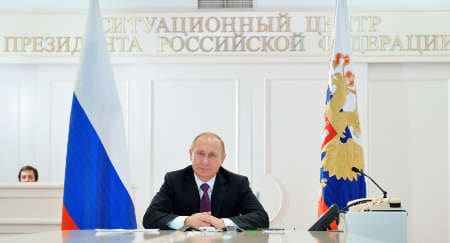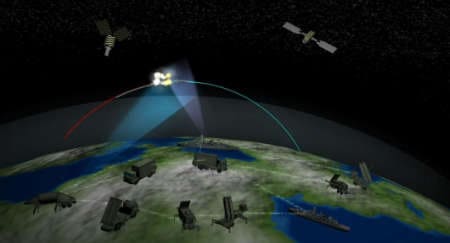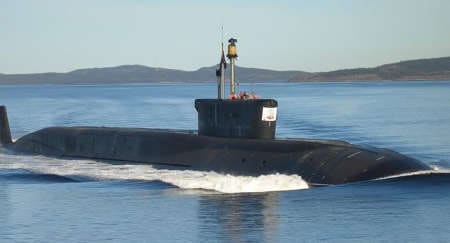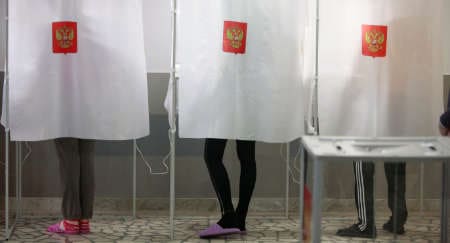Last December, while we busied ourselves with holiday preparations, Russia’s President Vladimir Putin found time to sign an updated version of Russia’s military doctrine. Despite this, the logic behind one of Russia’s classic grievances against the West – the deployment of ballistic missile defence (BMD) in Europe – has remained largely unexplained.
Russia’s 2014 military doctrine lists BMD as Moscow’s fourth external military danger. Since the United States officially announced the deployment of BMD in Europe in 2004, Russia has persistently referred to the project, run by NATO, as a demonstration of anti-Russian intent. Why after 10 years, does this issue still get such high ranking?
Moscow’s confrontational position on missile defence has proven politically expedient for a Russian government that has built its legitimacy on the necessity to defend Russia from external enemies. Now, when Russia is entering a full-fledged economic crisis that could affect the political allegiances of the Russian population, the Kremlin needs to revive the issue of BMD – a welcome enemy that contributes to the justification for government survival.
The Kremlin has been formally opposing the deployment of BMD on the basis that it would pose a threat to Russia’s nuclear deterrent and Russian security. Moscow has been using this strategy to prove Russia is a besieged nation surrounded by hostile powers. Putin used the example of missile defence in his February 2007 speech at the G8 Security Conference in Munich, while Medvedev referred to missile defence as a justification for military upgrades in 2011.
However, Russia’s security-based objections to the construction of ballistic missile defence in Europe appear unjustified given the array of countermeasures that Russia could employ to overcome NATO’s BMD. As of September 1, 2014, following its obligations under the New Strategic Arms Reduction Treaty (START), Russia reported to be in possession of a total of 1,643 warheads and 528 deployed intercontinental ballistic missiles (ICBMs), submarine-launched ballistic missile (SLBMs) and heavy bombers. Additionally, Russia possesses tactical missiles, decoys and chaff, and multiple independently targetable re-entry vehicles.
These are among the many countermeasures that Russia can use to negate the effect of missile defence. Given Russia’s offensive capabilities, Russia’s argument that missile defence in Europe poses a security threat to Moscow appears exaggerated. Then, why does the Russian leadership keep bringing it up?
The Political Usefulness of Ballistic Missile Defence
Russia’s objections seem more logical when examining the domestic utility of hostile rhetoric towards missile defence in Europe. Describing NATO’s missile defence as a threat to Russia feeds into the currently-promoted narrative. This paints the West as an aggressive force which aims to change Russia’s regime and negate its nuclear deterrent, which Moscow regards as the ultimate guarantee of its sovereignty. The justification that Russia has to protect itself from the external threat strengthens the need to maintain a strong, centralised government, endure economic woes, and continue to invest in military modernisation.
In his December 4 annual address, Putin used this logic by pointing to missile defence to justify the need to maintain and likely strengthen Russia’s defence. He insisted that Russia’s policy is reactive, forced by external factors: “We have no intention of becoming involved in a costly arms race - but at the same time we will reliably and dependably guarantee our country’s defence under the new conditions. There are absolutely no doubts about this. This will be done.”
The strategy to portray BMD as a threat to the Russian population seems effective. A survey conducted by the Russian polling organisation Levada centre in 2007 and again in 2010 revealed that the majority of the Russian constituency believed that the US construction of BMD in Europe presents a larger threat to Russia than the acquisition of offensive military capabilities by Iran or North Korea.
The 2010 Levada poll showed that 55 per cent of the respondents believed that the number one threat to Russian security was the deployment of US BMD in neighbouring states. Only 13 per cent of the respondents stated that Iran’s nuclear programme represented the main threat to Russia and 13 per cent indicated that the main threat was North Korea’s possession of nuclear weapons.
The 2010 Levada survey could be analysed together with another 2010 Levada poll that confirmed the deeply engrained perception of America’s hostile intentions among Russians. Some 73 per cent of the polled Russians indicated that the United States was an aggressor that sought to establish control over all states. In November 2014, another survey showed that 74 per cent of Russians had a negative opinion of the United States – an unprecedented peak in the post-Cold War period.
In this context, the portrayal of missile defence in Europe as a threat to Russia was important to strengthen Putin’s image among the Russian population and elites. A confrontational approach to BMD was, for example, useful before the 2012 presidential election when Putin built his platform on the image of defending a besieged state. Reconstructing the image of the United States as a Cold War type aggressor facilitated this perception and justified running again on the basis of the need to protect the Russian people from external enemies.
Hence, castigating the United States and NATO again became an effective strategy to win votes.
As a part of his 2012 presidential campaign, Putin published seven articles in various Russian newspapers on seven major issues. In the sixth article, entitled “Be Strong: Guarantees of National Security for Russia,” Putin focused on military issues and linked the construction of missile defence in Europe to strengthening Russia’s nuclear arsenal. The soon-to-be again president argued that as missile defence in Europe threatens Russia’s security, Russia has to invest in improving the capability of its nuclear forces to overcome the BMD threat.
This policy entails investing more in weapons modernisation, in Russia’s air and space defence, as well as in the military industrial sector. These policies would most likely appeal to the large group of Russian voters with a military outlook and Russians employed in the defence industry and the military bureaucracy. Some reports estimate that these voters could constitute as much as 40% of Russia’s voting population – quite a significant portion of the population to appeal to.
Russia’s return to a confrontational BMD position as a tool to distract domestic audiences and contribute to Putin’s approval ratings is therefore, a logical manoeuvre. Russia is in the midst of a currency crisis, with the Russian rouble hitting record low exchange rates. Under pressure by Western sanctions and low oil prices, the Kremlin’s energy-dependent coffers may find it challenging to slow the current rates of domestic policy problems that will likely affect public confidence in the Russian leadership. As another Levada survey showed, 80 percent of Russians expect a worsening of Russia’s economic performance.
For all of these reasons, BMD has become a political, rather than military, tool for distraction that helps to convince the Russian population of the need to focus on protecting the Russian state, rather than their economic livelihoods.




